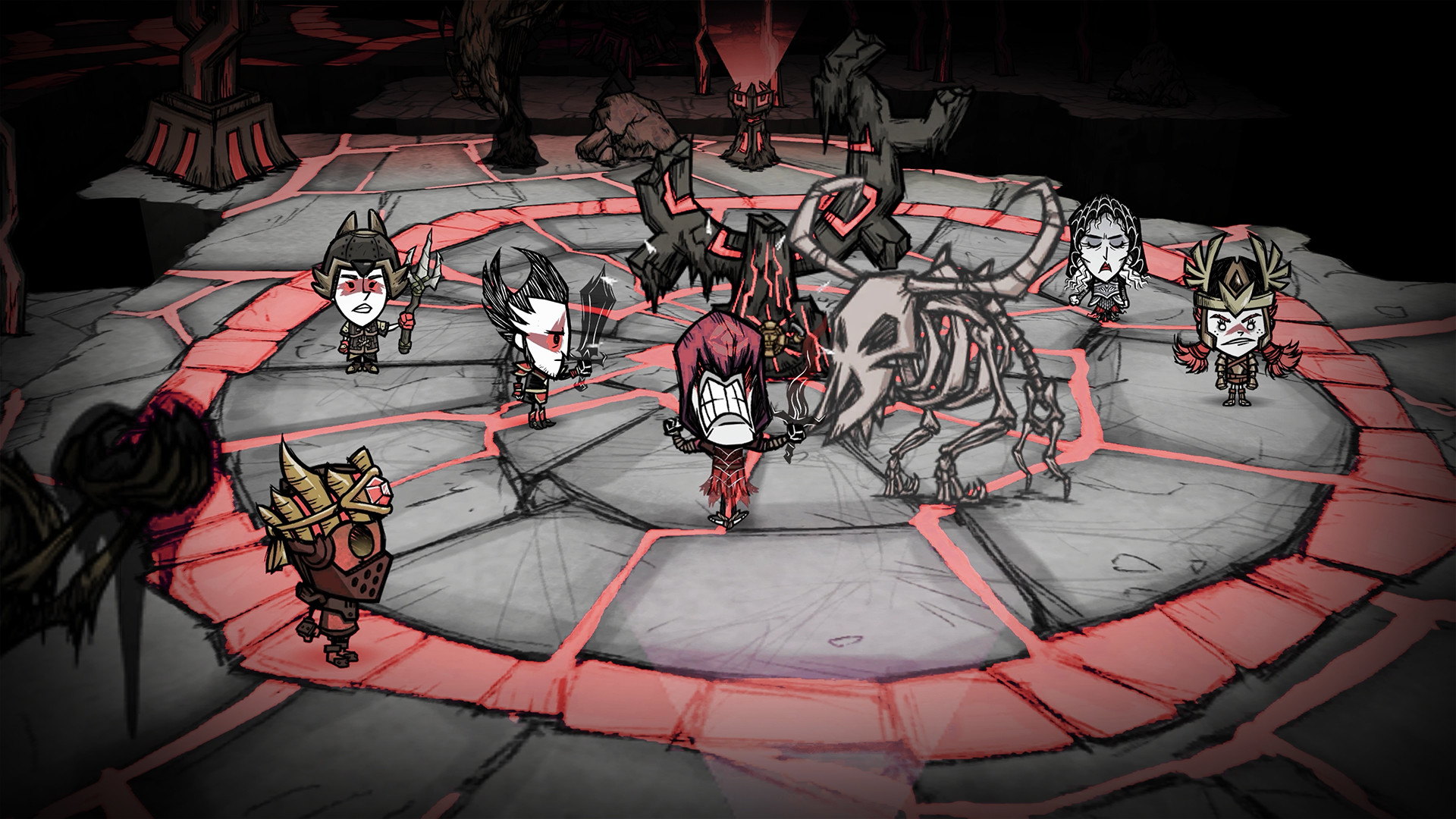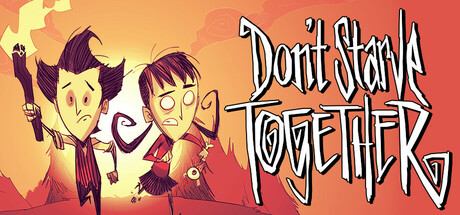Introduction
Don’t Starve Together (DST) launched on April 21, 2016, as the standalone multiplayer version of the popular survival game Don’t Starve. It quickly won over players, boasting a 95% “Overwhelmingly Positive” all-time score (from 340,729 reviews) and a 90% “Very Positive” recent rating (from 2,537 reviews). In this friendly comparison, CasualPlayer23 looks at how DST measures up to other survival-crafting games, pointing out its highs, lows, and special charm.
Story & Setting
DST drops you into “The Constant,” a strange, hand-drawn world full of odd creatures, ancient ruins, and changing seasons. While the main story—unraveling Maxwell’s secrets—adds a dash of mystery, it never overwhelms newcomers.
For example, Minecraft keeps its lore simple, letting you make your own stories. On the other hand, Don’t Starve Together guides you with unique characters and seasonal events.
Meanwhile, Subnautica offers a deep underwater plot, but Don’t Starve Together stays light and fun with quirky lines and seasonal festivals.

Gameplay Mechanics
DST mixes classic survival tasks—like gathering resources, building bases, and crafting—with roguelike twists such as permadeath and random maps. The cycle of day and night, along with a sanity meter and hunger system, keeps you on your toes.
- Co-op vs. Solo: Don’t Starve Together really shines with friends. One player might gather food, another might grow crops, and someone else can defend the camp. In solo games like Terraria, you have to handle every job yourself.
- Balancing Act: Don’t Starve Together is tough but fair. It moves faster than the friendly pace of Stardew Valley, punishing slip-ups, but each failure teaches you something new.
- Progress: Instead of levels, you improve by building better bases and unlocking characters. That feels more free-form than the strict tech trees in games like Raft.
Visuals & Audio
DST stands out with its Tim Burton–style art. Every spider den, snow drift, and shadow creature looks hand-drawn, creating a moody, unified world. Plus, the music shifts between playful tunes and tense themes, matching each season and biome.
In contrast, Valheim’s 3D Viking look is immersive but less stylized. Don’t Starve Together’s 2D art is instantly memorable and adds a bit of dark humor.
Also, listen for the ambient rustles, monster screams, and character quips—these details make the world feel alive, while Subnautica leans more on grand orchestral tracks.
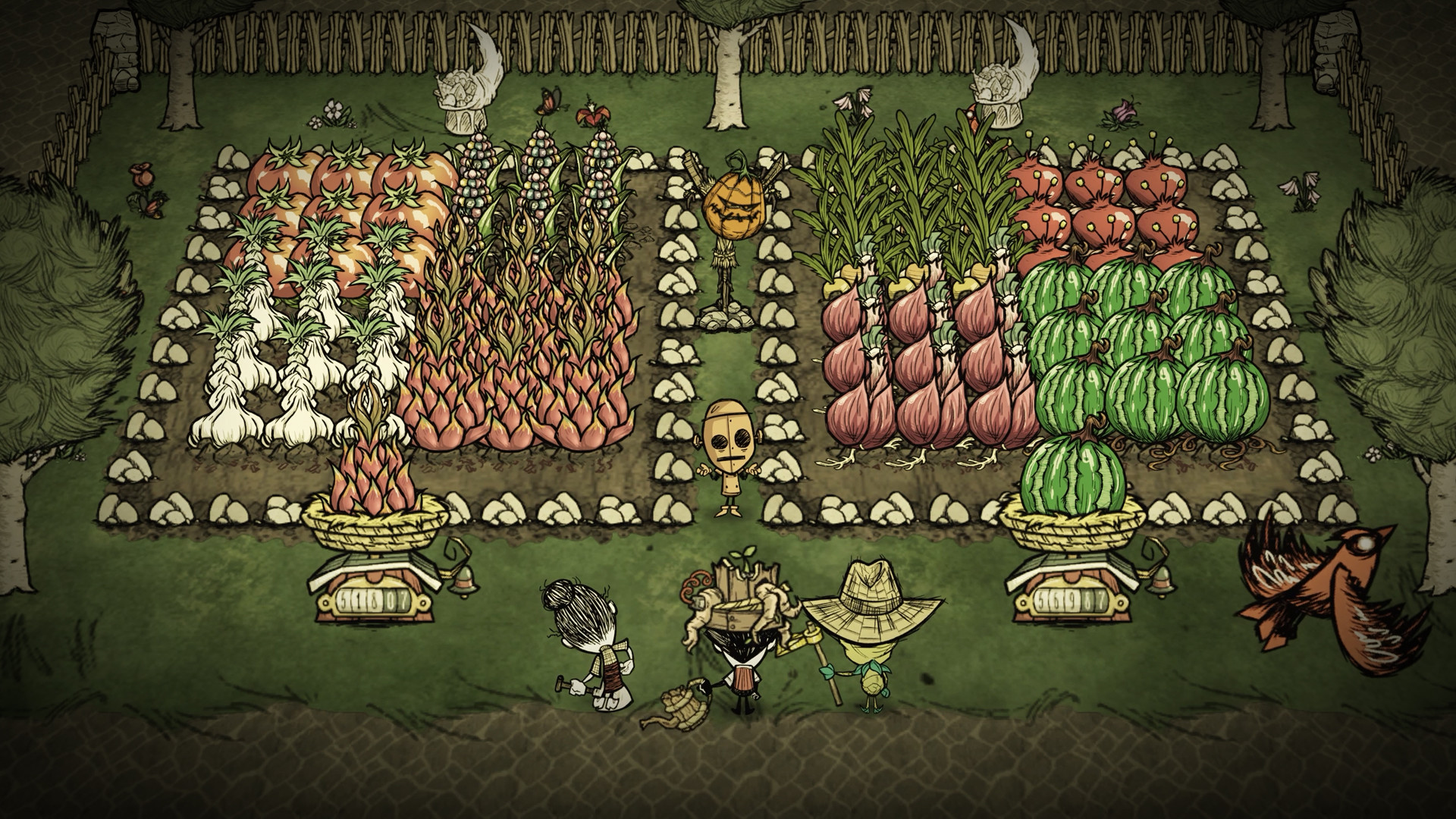
Multiplayer & Community for Don’t Starve Together
Multiplayer is Don’t Starve Together’s heart. Whether you run a private server or join public worlds, you’ll team up to build sprawling bases and take on huge bosses.
On top of that, a lively modding scene injects new characters, lands, and challenges. Unlike sandbox games like Minecraft, DST’s focused design means mods blend in naturally.
Plus, seasonal events—like Winter’s Feast or Holloween—add fresh goals and keep everyone coming back.
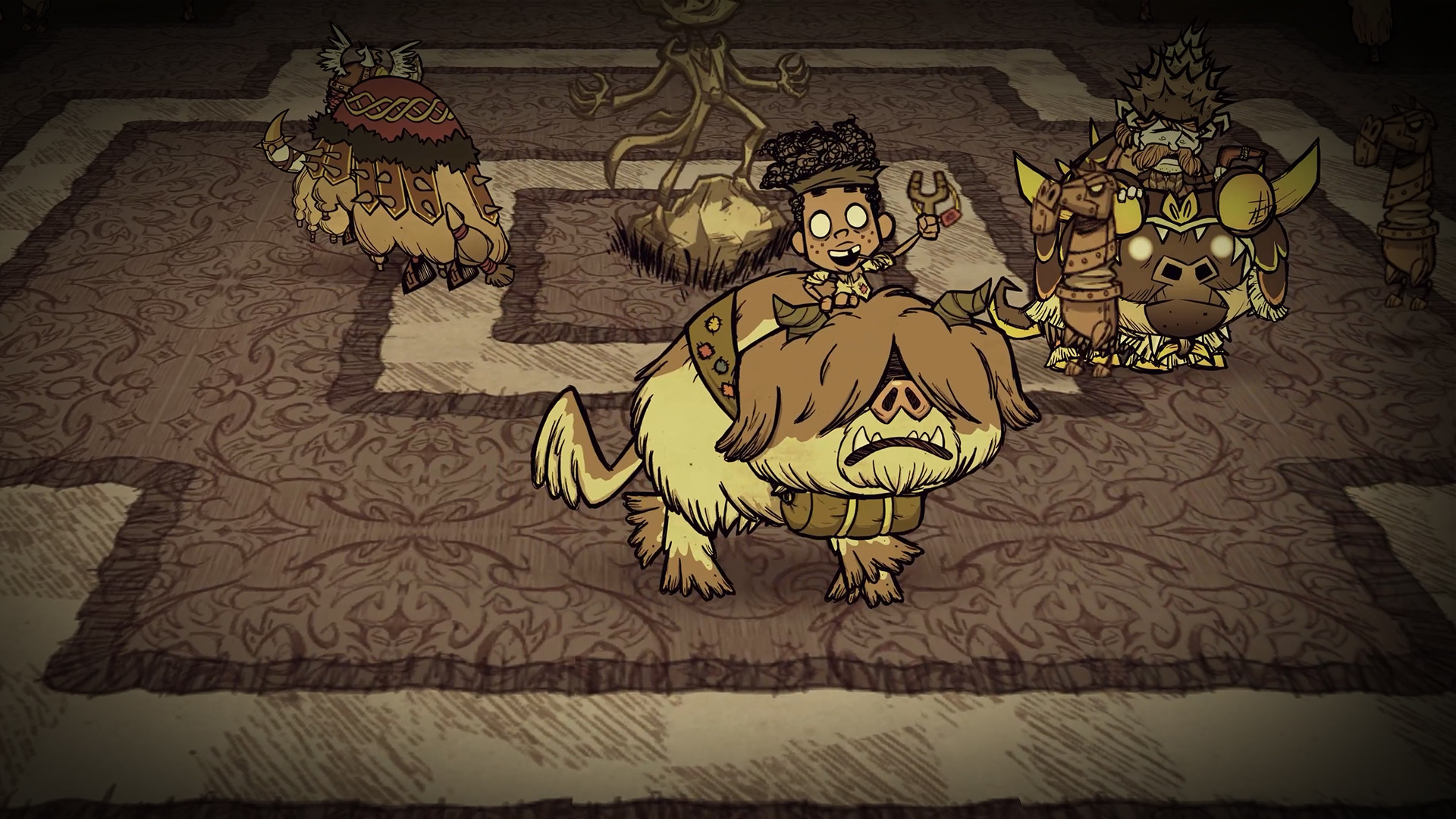
Comparing to Peers
- Minecraft: More open-ended; Don’t Starve Together offers structured challenge and personality-driven world.
- Terraria: Progression-heavy and combat-focused; Don’t Starve Together emphasizes resource management, sanity, and emergent stories.
- Raft: Focused on ocean exploration; Don’t Starve Together offers a richer land-based crafting system and seasonal variety.
- Valheim: Co-op boss-hunts in Norse realms; Don’t Starve Together’s roguelike permadeath and character variety foster different replayability.
- Subnautica: Single-player narrative dive; Don’t Starve Together prioritizes emergent survival and social play.
Review Analysis
The community’s 95% all-time and 90% recent positive ratings highlight DST’s enduring appeal. Users praise:
- Social Fun: Cooperation and shared near-disasters create memorable moments.
- Art & Atmosphere: Distinctive visuals and music earn near-universal praise.
- Replayability: Procedural maps and varied characters keep each session fresh.
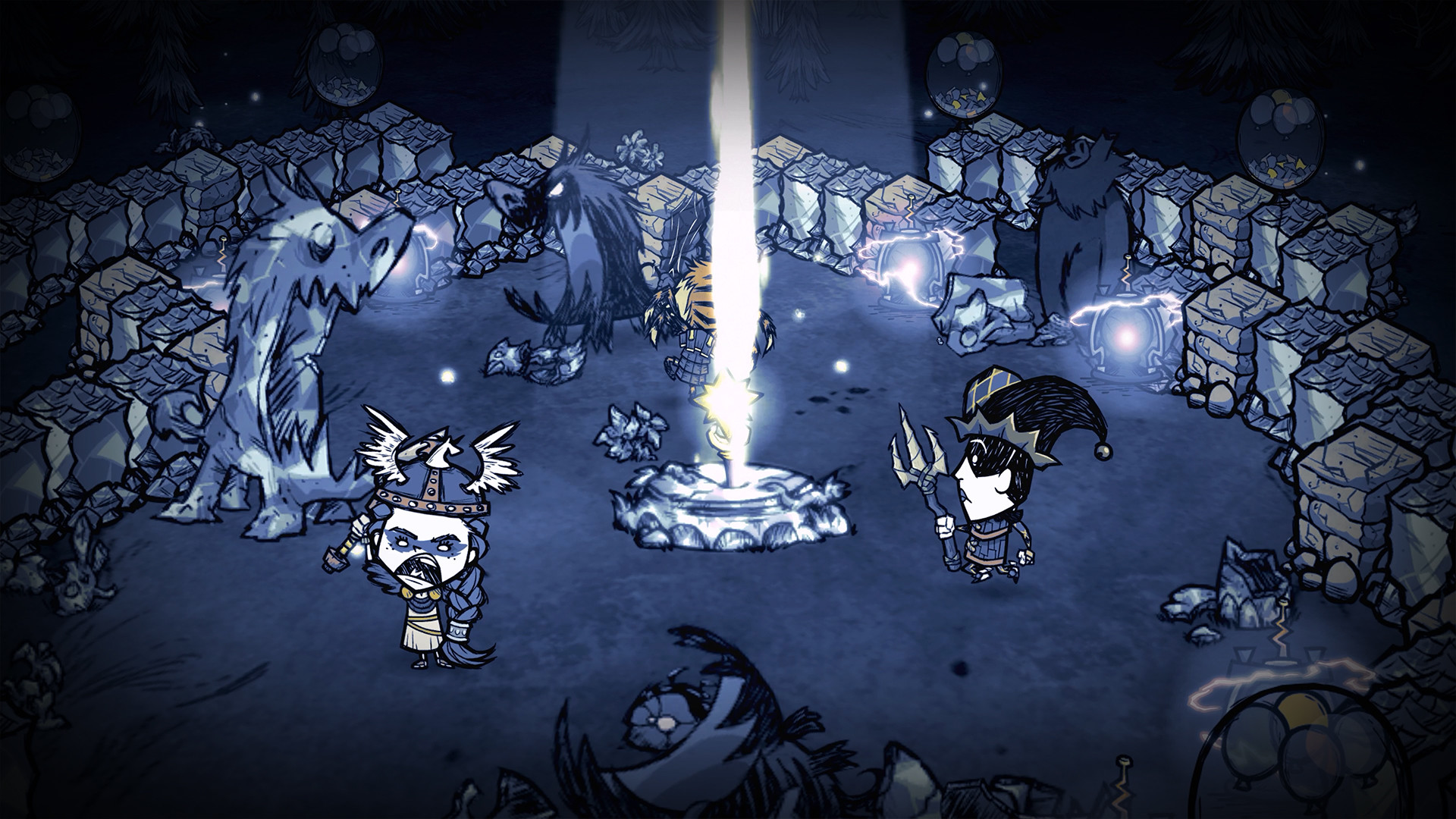
Criticisms tend to focus on:
- Steep Learning Curve: New players can feel overwhelmed by mechanics and permadeath.
- Late-Game Grind: Some find progression toward end-game bosses repetitive.
Conclusion for Don’t Starve Together
Don’t Starve Together stands out among survival-craft games for its unique art style, tight roguelike mechanics, and rich cooperative play. While it may intimidate newcomers with its punishing systems, the overwhelmingly positive community feedback confirms that the reward of mastering “The Constant” is well worth the effort. If you enjoy cozy yet challenging adventures—especially with friends—DST offers an unforgettable experience that many peers can’t quite match.
